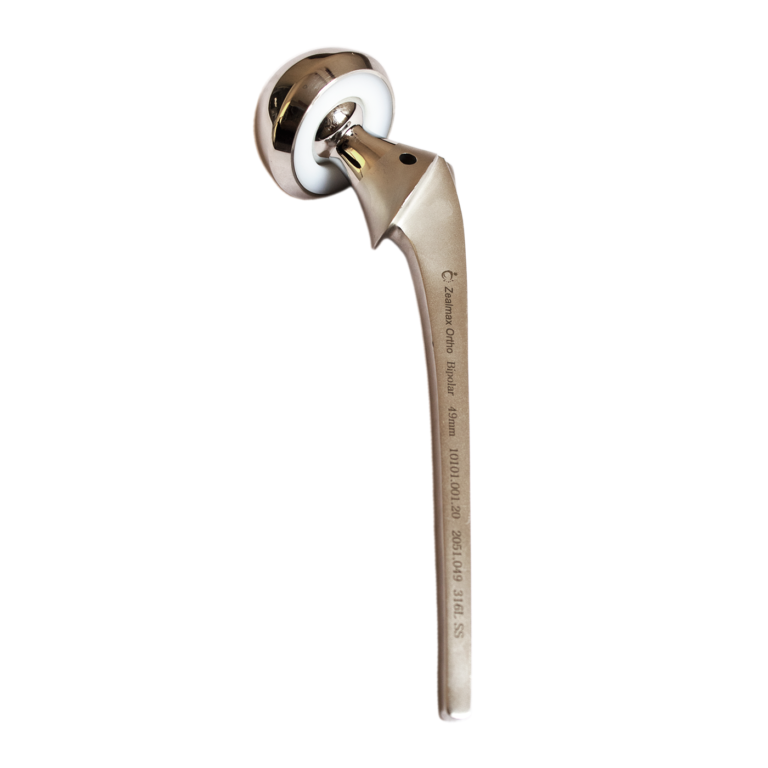If your hip has been damaged by a fracture or other conditions, it might be complex for you to do things that require movement of your hips. Sometimes, you are left with no other option but hip prosthesis/replacement orthopedic surgery.
Hip replacement is a safe surgery that can help you relieve your pain and you can move actively, again. A hip prosthesis is a medical device that replaces a broken hip joint. It consists of a curved femoral head inserted into a hollow shaped acetabulum within the pelvis and is protected by a synovial joint capsule. It is a major orthopedic device that has provided hip replacement surgery with a top place in successful operation.
In a hip replacement, the fractured bone and cartilage are separated and replaced with prosthetic devices. Following steps are performed in order, for the replacement surgery:
- The fractured femoral head is separated and replaced with a metal stem that is positioned into the empty center of the femur.
- The femoral stem may be either cemented or press-fit into the bone.
- A metal or ceramic ball is located on the upper part of the stem.
- This ball replaces the fractured femoral head that was separated.
- The injured cartilage surface of the socket (acetabulum) is disconnected and replaced with a metal socket.
- Screws or cement are sometimes used to hold the socket in place.
- A plastic, ceramic, or metal spacer is inserted between the new ball and the socket to allow for an even gliding surface.

Components used in hip prosthesis:
- The Femoral component contains a stem/pin and head.
- Acetabular cup
- Acetabular interface.
The femoral component is an inflexible metal pin made with:
- Cobalt chrome or
- Titanium alloy
Stainless steel was used earlier with ceramic polished head. A metallic or ceramic acetabular cup is placed in the hip socket and is fixed with the ilium bone. Adhesive bone cement is used generally to fix the pin & cup with the bone structure. The hip prosthesis component comes in different varieties such as:
- Ceramic on Ceramic
- Metal on Metal
- Metal on Polypropylene
The metal on metal hip prosthesis is used mostly.
The materials and components used for the pin require:
Things to keep in mind while designing are:
- Tissue tolerance
- Corrosion
- Wear resistance
- Mechanical behavior
- Cost-effective
Benefits of Hip Prosthesis:
- Relieves pain
- Higher success rate
- Long-lasting effect
- Improves mobility
Keeping in mind the benefits and success rate of the hip prosthesis in orthopedic surgery, this component is recommended to use if you are opting for a hip replacement surgery. We, at Zealmax Ortho, are aiming towards providing the best quality orthopedic implants while noting down the quality requirements.

